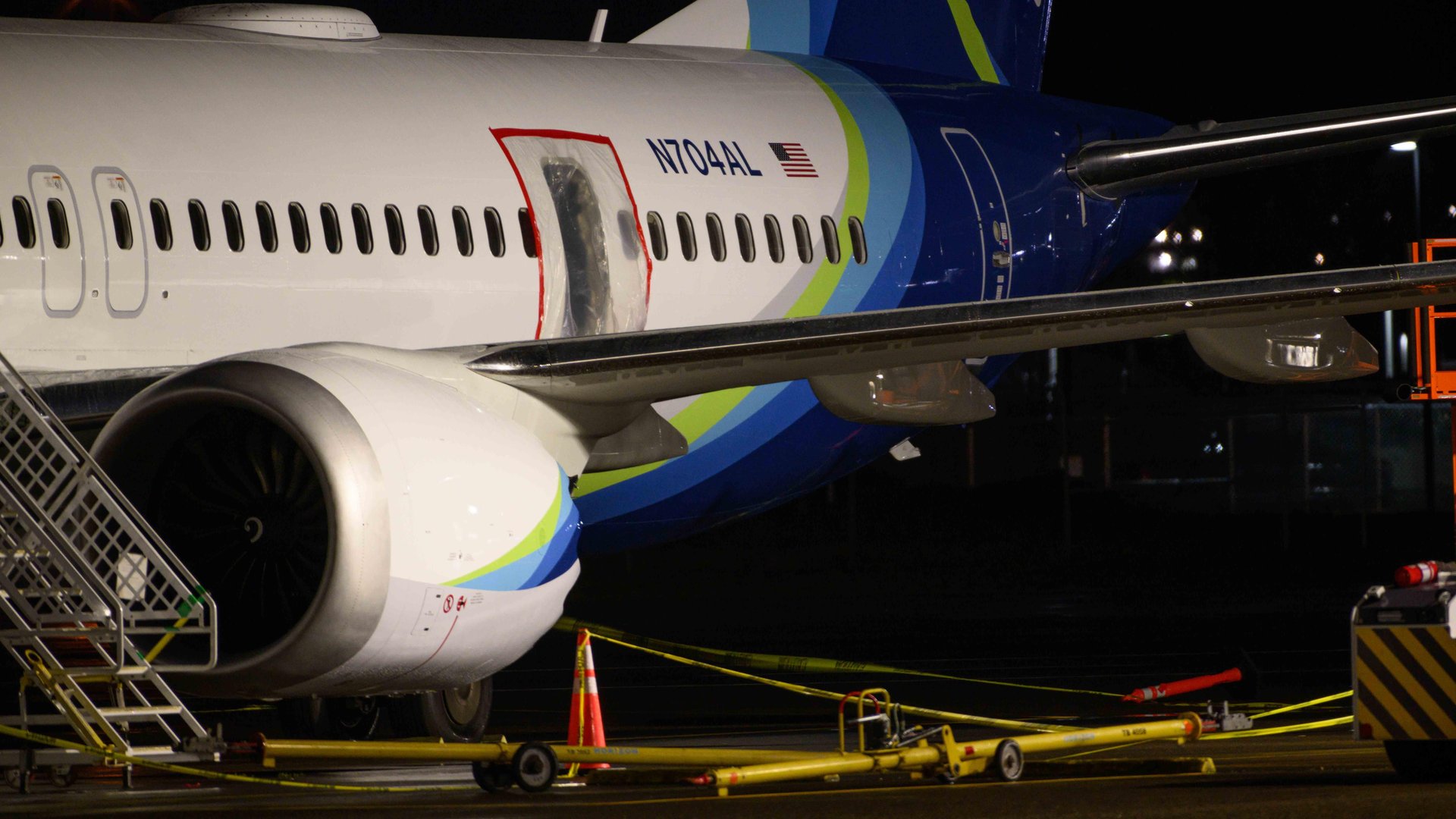Missing bolts and damaged rivets: Why a door-shaped hole appeared on a Boeing 737 Max mid-flight
The National Transportation Safety Board has released a preliminary report about the Alaska Airlines incident that has roiled Boeing

What a month it’s been for Boeing! On Jan. 5, a door-shaped piece of fuselage dislodged itself from the 737 Max 9 carrying Alaska Airlines flight 1282. Then the questions and headaches started, including the cancellation of a bunch of flights and the inspection of a whole lot of Boeing planes.
Suggested Reading
A few weeks later, after a Portland schoolteacher found the spare emergency exit-replacing so-called “door plug” in his backyard, CEO David Calhoun’s tearful apology to employees, an interview where a passenger on the flight told Good Morning America he thought he was going to die, and deal-savvy Ryanair CEO Michael O’Leary publicly saying he’d gladly buy any Boeing planes that rival carriers were too scared to take delivery of, the National Transportation Safety Board has released its preliminary report into what exactly happened during the incident, and why.
Related Content
🧑✈️ Before takeoff
The flight crew onboard that day had a combined 21,000 hours of flight experience, including 8,000 hours of 737 Max 9 flight time. From what they could tell, everything was fine: “The flight crew stated that the preflight inspection, engine start, taxi, takeoff, and departure climb were unremarkable,” the NTSB report reads.
🛫 Six minutes after takeoff
After the flight was cleared to go on its merry way from Portland to Ontario, a bunch of things went wrong. There was a bang, a pop, and then an unsettling realization:
The captain said that, while climbing through about 16,000 ft, there was a loud bang. The flight crew said their ears popped, and the captain said his head was pushed into the heads-up display (HUD) and his headset was pushed up, nearly falling off his head. The FO said her headset was completely removed due to the rapid outflow of air from the flight deck. Both flight crew said they immediately donned their oxygen masks. They added that the flight deck door was blown open.
💨 Under-pressured
Because there was now a large hole in a plane three miles in the sky, the passengers onboard experienced a rapid depressurization. The air in the cabin was kept thicker than the air outside the cabin so that passengers would be comfortable. But then “differential pressure was at 5.7 psi and rapidly decreased to 0 psi over the next few seconds.” All that air rushing out was why the oxygen masks descended, a kid got his shirt ripped off his body, and a few phones threw themselves toward the Earth. One of them somehow landed on the side of a road—still functioning!
🛬 An emergency landing
Despite all the chaos of the flight, everyone made it back to the ground in one piece. “Seven passengers and one flight attendant received minor injuries,” the NTSB reports. The so-called “black box” containing a recording of flight data and audio recorded onboard was recovered. The data was in good shape, but because a “circuit breaker had not been manually deactivated after the airplane landed following the accident in time to preserve the accident flight recording,” we don’t have any audio from the flight deck.
🤷 What went wrong?
The investigation focused primarily on the door plug, which is “only intended to be opened for maintenance and inspection,” and was recovered in Portland teacher’s backyard:
- It’s a piece of equipment “primarily constructed of aluminum and is installed in the fuselage by means of two upper guide fittings and two lower hinge fittings.”
- It was manufactured in March 2023 by Boeing subcontractor Spirit AeroSystems in Malaysia, attached to the fuselage at Spirit’s Wichita, Kansas facility during summer 2023, then shipped to Boeing’s facility in Renton, Washington at the end of August 2023. (The Federal Aviation Administration is putting “more boots on the ground” in both places.)
- In September 2023, a manufacturing defect report generated by Boeing workers noted that there was some damage to rivets around the frame of the door plug. Four bolts that helped secure the door plug to the plane were removed to fix the problem.
- “Photo documentation obtained from Boeing shows evidence of the left-hand MED plug closed with no retention hardware (bolts) in the three visible locations.”
- During the incident, the two lower hinge guides broke.
- Based on the damage observed in the plane, the NTSB determined that the four bolts that were supposed to keep the door plug in place were missing.
The NTSB is not done with its investigation, and it is still seeking “to determine what manufacturing documents were used to authorize the opening and closing of the left MED plug during the rivet rework.”
